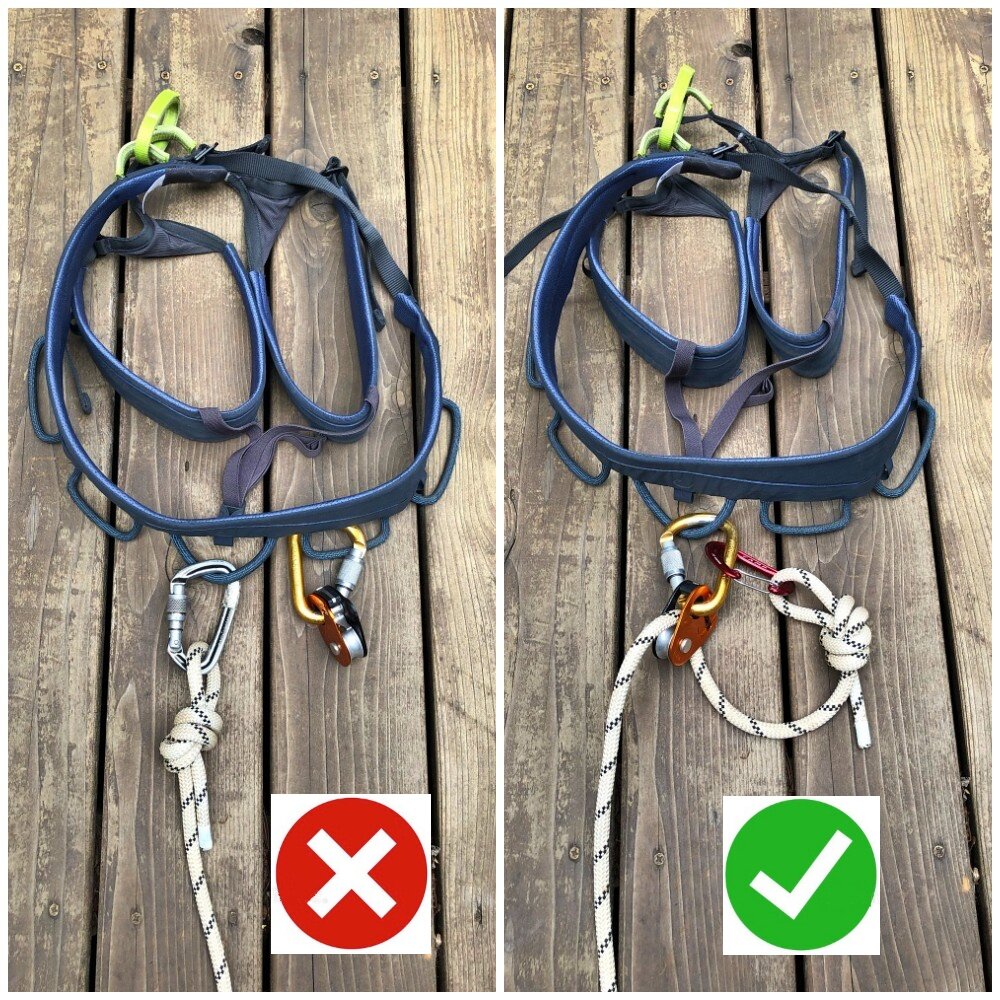Pre-thread the haul pulley
For any kind of serious hauling, big wall climbers use a progress capture pulley (aka “PCP”), such as the excellent Petzl Micro Traxion. The little puppy is expensive and extremely important, so it’s critical to never drop it!
If you pre-thread the haul rope through the pulley, it’s faster to set up and you’re much less likely to drop either the pulley or the rope. (This may seem like a small detail, but attention to little things like this adds up, reduces cluster, and collectively can make your big wall climb a lot smoother.)
Some climbers like to use a tag line system that involves pulling everything you need at the new anchor up on one thin (5 or 6 mm) cord after they finish the pitch. This approach has pros and cons; climbing with less weight good, takes a bit longer to set up the anchor and haul, not so good.
A more traditional approach is the leader climbing with the haul rope and the PCP attached to their harness. This tip is for them.
A note on the harness and gear loop . . .
Typically on a big wall, you'll have a more burly harness then the one shown here, with a designated hauling loop. The harness I’ve used on my big walls has been retired and I haven't replaced it, so I used my current one (Edelrid Sendero, which I love) for the photo.
Personally, I'm fine with using a standard gear loop for the tiny load of a rope like this, but you may want something stronger. Think of it this way: if you're comfortable putting $500 worth of cams onto a single gear loop and not worrying about it breaking and losing your cams forever, then why are you concerned about the haul rope, which would probably just drop down to your partner at the lower anchor?
If you have a harness like this one without a full strength haul loop, you could girth hitch a 30 cm sling around your entire waist loop and use that instead.
Check out the photo above.
On the left is the old-school technique: just clip the gear to your harness. This increases the chances of dropping the rope or the PCP, plus you have to put the rope into the pulley at every anchor. It hasn't happened to me, but I have seen a dropped haul rope, whoops!
(Notice on the left photo, the pulley is clipped to one of the side gear loops. This at least makes it less likely you’ll fumble or drop it, rather than using the rear gear loop.)
On the right, the haul rope is pre-threaded through the PCP. Engage the cam in the PCP. Tie a bight knot with a small loop into the end of the rope, clip it with a non-locking carabiner, and clip that carabiner into the PCP locking carabiner. You should never have to remove the haul rope from the pulley for your entire climb.
To pair with the Micro Traxion, Petzl recommends using an oval locking carabiner (which can be a bit hard to find) or a standard HMS carabiner. Here we’re going with the classic Petzl Attache. (A locking “D” carabiner can work with a PCP, but it's not ideal.)
When you reach the anchor, clip the non locking carabiner with the haul rope somewhere on the anchor. Ideally, you clip it on the side where the leader will start the next pitch, so it's all ready to go and easy to grab (and remember). Sweet, now you can't drop the haul rope.
Only THEN do you (carefully) unclip the locker and PCP from your harness and clip them to the hauling point. Schweet, just about impossible to drop the haul rope or the PCP. Plus, the rope is already threaded and you can start hauling sooner. Being that one of the first tasks of the leader is to set up the haul fast and pull the bags a few meters off of the lower anchor so your second can break it down and get started, this is a good thing.
Minor safety note: after you clip the PCP to the anchor, remember to engage the cam on the pulley BEFORE you start pulling up rope. Reason: if your overeager partner below were to release the bags too early, their weight would come onto the cammed pulley. If you did not engage the cam and pulled up a bunch of slack, you could potentially have a free-falling haul bag put a huge shock load onto your anchor, big problem!
What's a good way to make a big wall anchor? Excellent question! We cover it in detail at this article.

